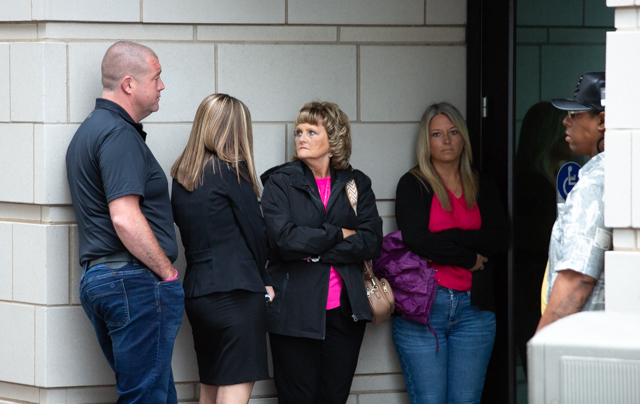Kentucky’s Internet speed, price among worst in America
Published 11:00 am Thursday, October 9, 2014
Kentucky is among the worst states in the nation for Internet service and prices.
A recent study by Blue Fire Broadband, a satellite Internet company that offers service in rural areas where cable and DSL aren’t readily available, listed all 50 states from best to worst in four categories: broadband speed increase from 2010 to 2014, average broadband speed in 2014, average price drop per megabits per second and average price per Mbps in 2014.
Kentucky has the second-worst broadband speed this year at 15.97 Mbps, followed by Maine at 14.79 Mbps. Kentucky ranked 39th in price per Mbps at $3.95 Mbps.
Although Kentucky has almost the worst broadband speed in the nation, its speed has increased since 2010, when it was 7.51 Mbps, ranking it 44th in the country for speed increase between 2010 and 2014. The state came in at 42nd for average price drop per Mbps, going from $5.48 in 2010 to $3.95 this year.
Those numbers could be improving in Warren County with the efforts of elected officials and community leaders.
Warren County Judge-Executive Mike Buchanon said Warren County began work four years ago to bring in a company to help fill service gaps. “We really started having active engaged discussions after we brought ConnectedNation on board. They were key to putting this together with FastNet,” Buchanon said.
Bowling Green-based ConnectedNation has been key in helping communities across the nation improve their connectivity by coming up with plans to use existing resources and bringing service providers to the table.
The Franklin-based FastNet has been working for the past year to increase high-speed service through the county.
“We are working with FastNet, giving them opportunities to use assets throughout the county,” Buchanon said. “They have placed equipment on water towers in virtually every area of the county and have made installations in homes and businesses throughout every area.”
Buchanon said the company brings a big fiber trunk line to a certain area and runs it to a tower or silo and transmits with a wireless signal.
“They started in the Woodburn area but have a number of installs in Smiths Grove and Oakland,” he said. “They are prepared to install in the Richardsville and Riverside areas, and I believe they are installing as quickly as they can.”
Bruce Powell, a partner in FastNet, said his company is in 11 different counties after being in business for five years.
The company has about 200 customers in Warren County.
“This summer we have been doing a lot of tower upgrades, and we are wrapping that up,” Powell said. “So we will begin to do a big push for more customers. We have other towers that we will be building out.”
Powell said the company’s intention is to serve mostly rural customers who are underserved or not served at all. The company’s packages are designed mostly for the casual home user. A basic package is $34.95 a month with a $99 installation fee.
That will get a person 2 Mbps download speeds.
“That is really all you need for just surfing the ‘net and social media,” he said. “If you do live streaming … you might need the 6 mbps package.”
The company actually can provide up to 20 Mbps for someone who might be bringing in lots of data. “We don’t make people sign contracts, and we have no bandwidth caps,” Powell said.
Powell said they have had calls from some people within the city limits asking about the service, but the main concern is for the rural areas.
As for reaction to Blue Fire’s study, Powell said he can’t be sure of its accuracy. “There are so many studies out there, and I’ve never heard of this company,” he said.
Gerad Kent, content manager at Blue Fire, said via email that the company collected its data from independent research through Internet service providers, looking for any “shocking information or any big signs of improvements.” The study is the first of its kind Blue Fire has done.
Kent said Kentucky’s low ranking could be because of the state’s physical layout.
“The speed problem comes from the vast amount of land and distance between network hubs. With so much ground to cover, it is difficult to specify certain areas where you can make the connections stronger,” Kent said in the email. “As for pricing, the more competitors in the market, the lower the prices become on average. “
Pamela Trautner is spokeswoman for the Kentucky Finance and Administration Cabinet, in which the Commonwealth Office of Broadband Outreach and Development operates. Trautner said the office works to educate people on the advantages of using the Internet, but oftentimes people don’t have good access to the Internet.
Trautner said 23 percent of Kentucky households don’t have Internet access. Internet access is available to 72 percent of the people in the state, but 58 percent use it.
“Some Kentuckians say, ‘We don’t know how this benefits us. We don’t know the value of it,’ ” Trautner said.
The Finance and Administration Cabinet is putting together the Next Generation Kentucky Information Highway. The plan will focus on eastern Kentucky first, and it will become a statewide project as a “middle-mile fiber infrastructure,” Trautner said.
“This is truly one of the most important infrastructure projects since interstate highways or sewer and water,” he said.
The project is projected to boost Kentucky’s Internet speeds and improve access.
“We should be catapulted into the top three or four (in the nation) as far as speed and access,” Trautner said.
Next Gen Kentucky Information Highway is expected to start at the end of this year and finish in 18 to 24 months.
Michael Pedelty, public relations director at Time Warner Cable, said TWC constantly pursues ways to improve speeds and prices for its customers.
“We’re always evaluating, ‘How do we make our service better?’ It’s a continual process,” Pedelty said. “We continue to invest in the service to make sure we’re providing the level of service people expect … and make sure it’s great customer service, not just what they expect.”
TWC’s service ranges from an “everyday low pricing” level – the slowest and cheapest at 2 Mbps for $14.99 per month – to an “ultimate” level – the fastest and most expensive at 50 Mbps and $64.99 per month.
Last year, TWC increased its download speed of its standard package – the company’s most popular level of service – by 50 percent, or from 10 Mbps to 15 Mbps, Pedelty said. Because coverage areas are divided into “nodes,” such as neighborhoods, Pedelty said TWC monitors each area to see which ones need updates.
“As the network becomes more congested, we invest things into that network to make it faster,” Pedelty said.
TWC can add more fiber to a network, which increases broadband capacity and reduces backlog, Pedelty said. TWC also upgrades its equipment, such as electronics in the field and central processing facilities.
Pedelty said he couldn’t speak to Blue Fire’s study because it seemed too vague and didn’t take customer satisfaction level into account.
Cathy Lewandowski, senior PR manager for AT&T Corporate Communications, said AT&T knows how to compete in the Internet service market because the company knows what customers want.
“We know customers want more speed. That’s why we have plans to increase speeds and expand availability of our U-verse offerings as part of our three-year, multi-billion dollar Project Velocity IP,” Lewandowski said in an email.
AT&T’s Internet service packages range from “basic,” which is for Internet Protocol and Digital Subscriber Line only and costs $33 per month for download speeds up to 768 Kbps, or 0.768 Mbps, to “power,” $81 per month and 45 Mbps.
AT&T customers also gain access to the entire national AT&T Wi-Fi Hot Spot network at no extra charge, which they can’t get from cable, Lewandowski said.
Blue Fire’s satellite Internet pricing starts at $39.99 with up to 15 Mbps speed.
New Jersey and South Dakota had the best broadband speed and price per Mbps in the United States, respectively. New Jersey’s average broadband speed this year is 38.63 Mbps. South Dakota’s average price per Mbps is $2.
— Follow business beat reporter Monica Spees on Twitter at twitter.com/BGDNbusiness or visit bgdailynews.com.






